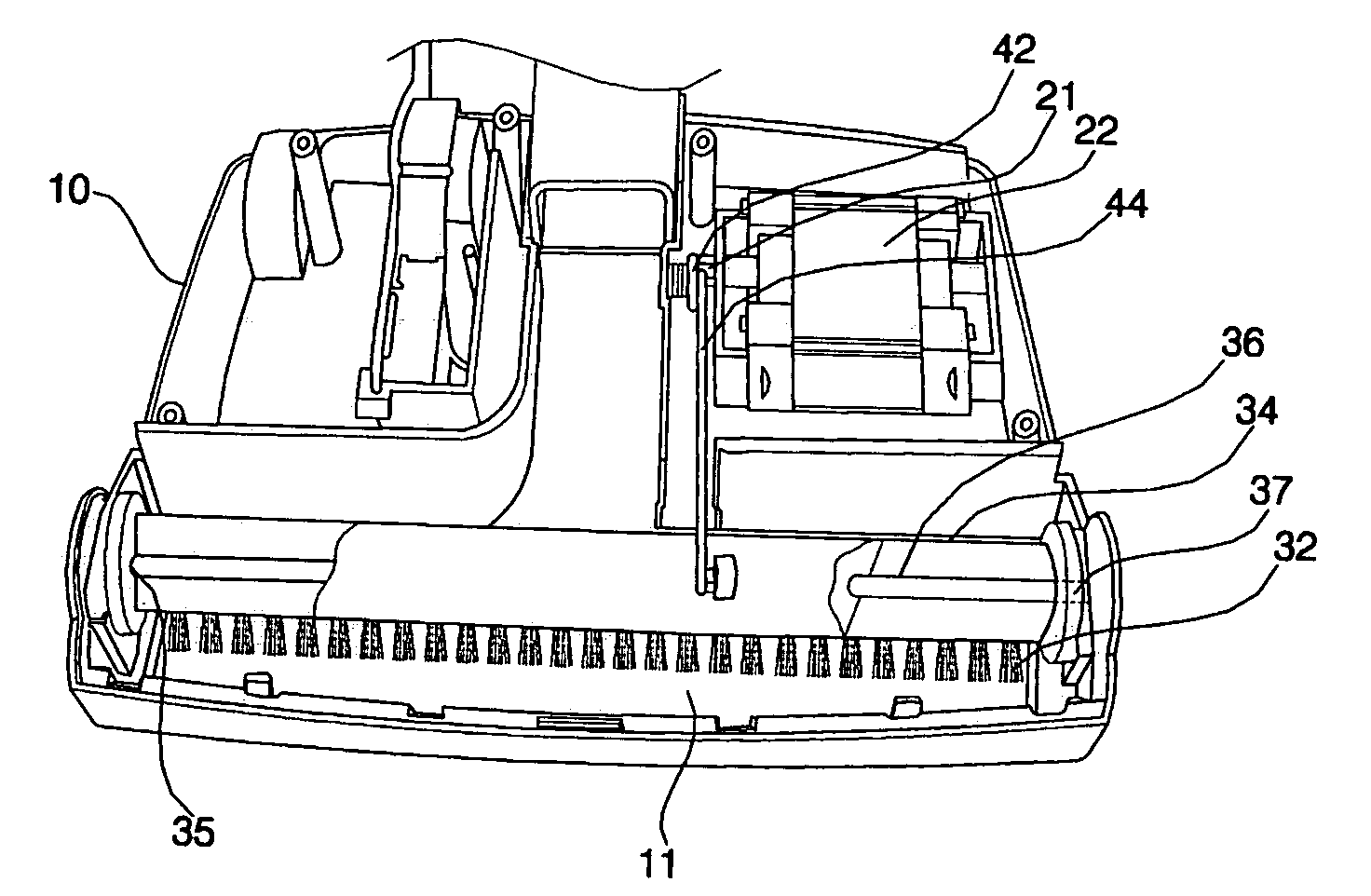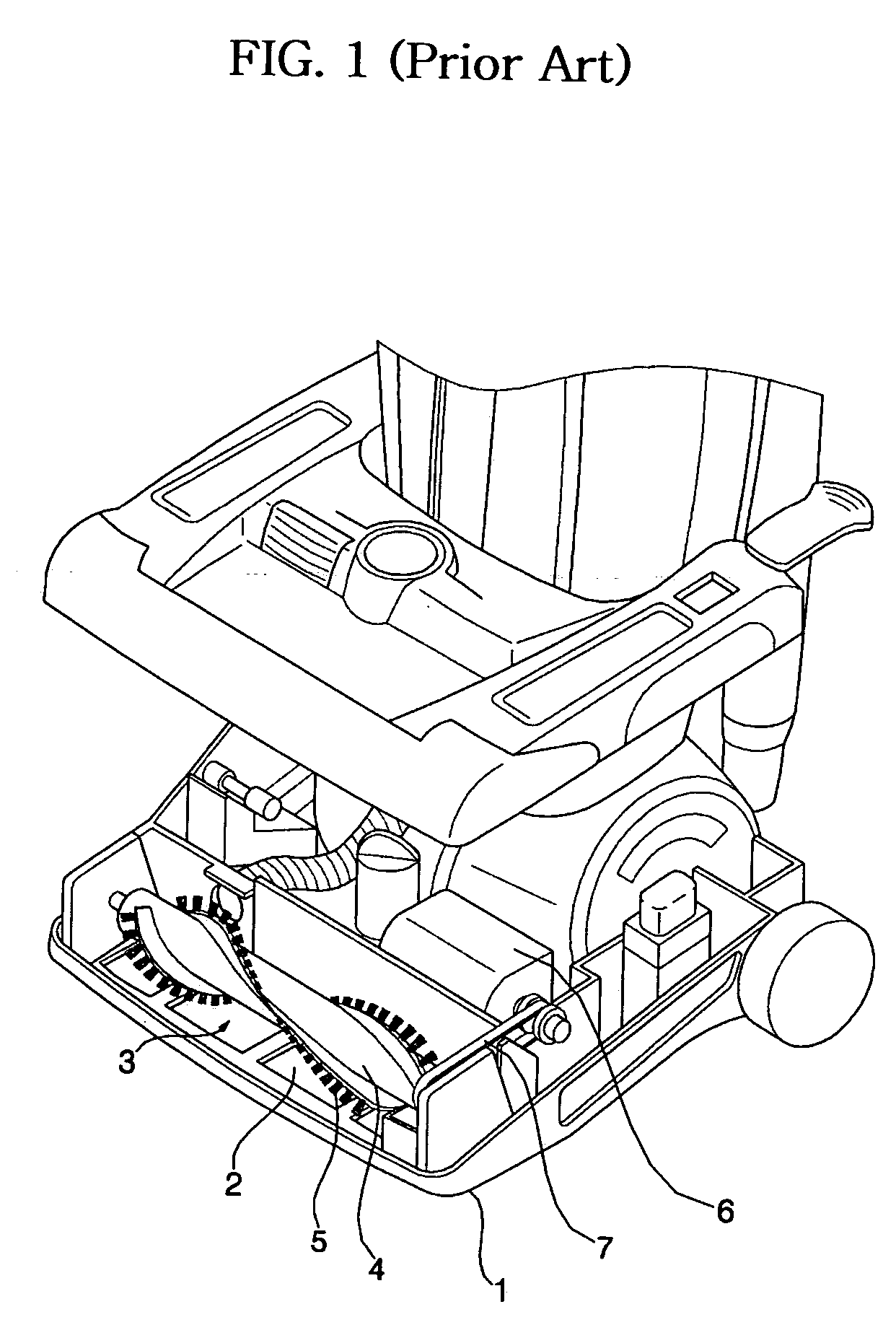Method for determining frequency of power brush in vacuum cleaner
a technology of power brush and vacuum cleaner, which is applied in the direction of vacuum cleaners, cleaning processes and apparatuses, applications, etc., can solve the problems of high power consumption, achieve the effect of maximizing cleaning efficiency, minimizing noise and vibration, and large amount of movemen
- Summary
- Abstract
- Description
- Claims
- Application Information
AI Technical Summary
Benefits of technology
Problems solved by technology
Method used
Image
Examples
Embodiment Construction
[0027] Now, a preferred embodiment of the present invention will be described in detail with reference to the accompanying drawings.
[0028]FIG. 2 is a perspective view showing the interior of a suction head of a vacuum cleaner according to a preferred embodiment of the present invention, FIG. 3 is a side view schematically showing a power transmission part of the suction head shown in FIG. 2, and FIG. 4 is a graph illustrating experimental values of operating angles based on a driving frequency of a power brush of the present invention.
[0029] As shown in FIG. 2, the suction head of the vacuum cleaner according to the present invention comprises a head body 10 having a suction hole 11 formed therein, and a power brush attached to the head body 10.
[0030] The power brush comprises a power supply unit, and a driving unit driven by means of the power supply unit for raising waste from the floor.
[0031] Preferably, the power supply unit comprises a motor 22, which is driven by means of ...
PUM
 Login to View More
Login to View More Abstract
Description
Claims
Application Information
 Login to View More
Login to View More - R&D
- Intellectual Property
- Life Sciences
- Materials
- Tech Scout
- Unparalleled Data Quality
- Higher Quality Content
- 60% Fewer Hallucinations
Browse by: Latest US Patents, China's latest patents, Technical Efficacy Thesaurus, Application Domain, Technology Topic, Popular Technical Reports.
© 2025 PatSnap. All rights reserved.Legal|Privacy policy|Modern Slavery Act Transparency Statement|Sitemap|About US| Contact US: help@patsnap.com



